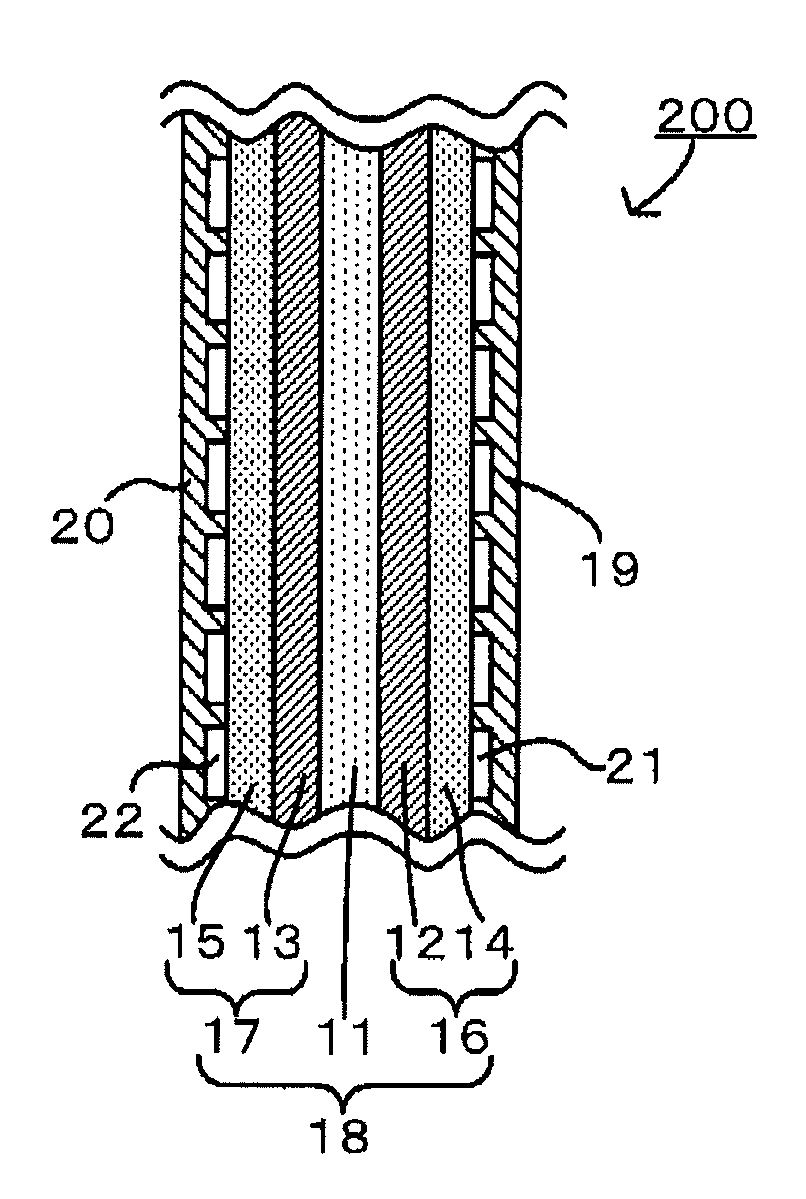Method for producing fine catalyst particle and fuel cell comprising fine catalyst particle produced by the production method
a technology of production method and catalyst particle, which is applied in the direction of cell components, electrochemical generators, physical/chemical process catalysts, etc., can solve the problems of electrode catalyst and the cost of commercial mass production of fuel cells, and achieve high activity and high coverage
- Summary
- Abstract
- Description
- Claims
- Application Information
AI Technical Summary
Benefits of technology
Problems solved by technology
Method used
Image
Examples
example 1
1-1. Pre-Treatment of Carbon-Supported Palladium Particle
[0132]First, 5 g of carbon-supported palladium particles are added to 1 L of pure water and dispersed therein using an ultrasonic homogenizer. The thus-obtained dispersion was added in an electrochemical reactor and mixed with sulfuric acid to achieve the sulfuric acid concentration of 0.05 mol / L. The electrochemical reactor was placed in a glove box. The dispersion was deoxidized by sufficiently bubbling an inert gas (N2 gas) into the dispersion. Then, a potential window of 0.4 to 0.45 V (vs. RHE) was applied for 360 cycles on the working electrode of the electrochemical reactor to sufficiently reduce the palladium particle surface.
1-2. Formation of First Composite Body
[0133]In the electrochemical reactor, a deoxidized sulfuric acid solution of K2PtCl4 was gradually added in a dropwise manner. The amount of the sulfuric acid solution of K2PtCl4 added was 55 atm % when the minimum amount of platinum atoms required to cover th...
reference example 1
[0139]First, a pre-treatment was carried out in the same manner as the above “1-1. Pre-treatment of carbon-supported palladium particle” in Example 1.
[0140]Next, in an electrochemical reactor, a deoxidized sulfuric acid solution of K2PtCl4 was gradually added in a dropwise manner. The amount of the sulfuric acid solution of K2PtCl4 added was 120 atm % (St=1.2) when the minimum amount of platinum atoms required to cover the palladium particle with a monatomic layer of platinum is 100 atm %. With monitoring the self-potential inside the electrochemical reactor, the mixture was stirred until the potential reached a plateau (that is, until the platinum covering reaction ended), thereby covering the palladium particle surface with the platinum.
[0141]FIG. 6 is a graph showing a transition observed by monitoring the covering with platinum in Reference Example 1. As is clear from FIG. 6, just after starting the addition of the sulfuric acid solution of K2PtCl4, the self-potential started to...
reference example 2
[0143]The catalyst for fuel cells of Reference Example 2, in which the fine catalyst particles were contained, was produced by carrying out a pre-treatment, platinum covering and post-treatment in the same manner as Reference Example 1, except that in the addition of the sulfuric acid solution of K2PtCl4 in a dropwise manner, the amount of the sulfuric acid solution of K2PtCl4 added was 100 atm % (St=1.0) when the minimum amount of platinum atoms required to cover the palladium particle with a monatomic layer of platinum is 100 atm %.
PUM
 Login to View More
Login to View More Abstract
Description
Claims
Application Information
 Login to View More
Login to View More - R&D
- Intellectual Property
- Life Sciences
- Materials
- Tech Scout
- Unparalleled Data Quality
- Higher Quality Content
- 60% Fewer Hallucinations
Browse by: Latest US Patents, China's latest patents, Technical Efficacy Thesaurus, Application Domain, Technology Topic, Popular Technical Reports.
© 2025 PatSnap. All rights reserved.Legal|Privacy policy|Modern Slavery Act Transparency Statement|Sitemap|About US| Contact US: help@patsnap.com



